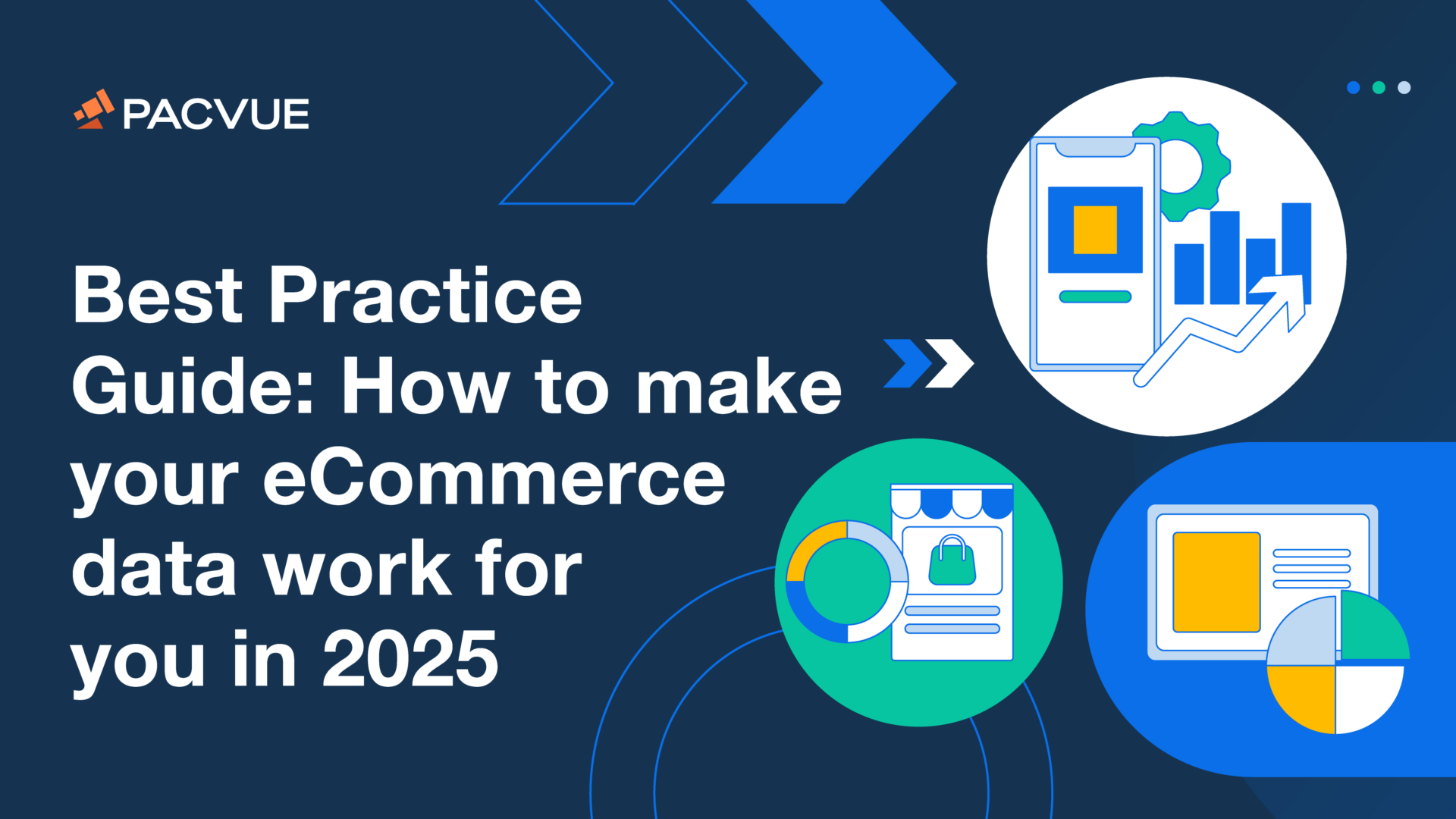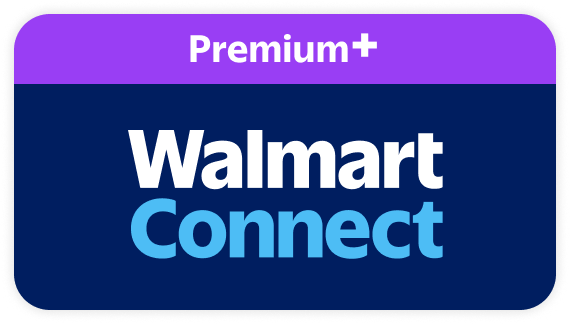In 2025, every retail media ad—and every dollar funding it—will count. While consumers struggle with the cost of living crisis, manufacturers face rising costs and increased competition for share of the digital shelf. 2025 is the year advertisers will need to be accountable, like never before, for every dollar spent on retail media campaigns. This means:
- Fine-tuning your performance measurement
- Getting faster and smarter with your campaign execution
- Improving your eCommerce data analysis to build your best campaigns
It’s this trinity of intelligence, combined with the ability to execute at speed, and adjust your strategies in real time that will win throughout the year ahead. In this article, we will:
- Explore the main challenges in store for advertisers in 2025
- Show how integrating eCommerce data and advertising tools is giving leading brands a clear competitive advantage
- Explain how to combine data and ad tech to build winning retail media campaigns; increasing market share, reducing wasted ad spend, and boosting profits
Why achieving ecommerce growth in 2025 will be tough for brands
Discretionary purchases will continue to decline
Slowing consumer spending and rising inflation will lead to a decline in discretionary purchases. In January 2025, UK consumer confidence fell to its lowest point in over a year, with GfK’s (a NIQ company) consumer confidence index dropping five points to minus 22 [1].
Competition heats up online
Online categories are becoming increasingly competitive. By 2025, eCommerce is expected to represent nearly 21% of all retail transactions around the world, underscoring its critical role in the retail space [2]. Increased competitiveness could lead to erosion of market share and higher marketing costs for many brands.
Retail media costs are rising
Retail media and customer acquisition costs are rising, putting pressure on margins. Pacvue’s 2024 benchmark reports tracked the rising cost-per-click (CPC) on leading retail media networks, including Amazon and Walmart:
- Q2 2024: On Amazon, Sponsored Brands CPC rose by 13.8% YoY, and Sponsored Products CPC increased by 12.3% YoY.
- Q3 2024: Driven by Prime Day in June, CPC on Amazon.com increased 8% for Sponsored Brands QoQ and a remarkable 12% YoY.
- Cyber 5 2024: During the Cyber 5 period, overall CPC on Amazon ads US increased by 13% YoY, driven primarily by a 20% surge in Sponsored Brands Ads.
Managing the complexity of omnichannel shopping
Shoppers want faster and more seamless omnichannel experiences. In 2025, NeilsenIQ predicts nearly 60% of American households will be omnichannel shoppers [3]. Brands must invest in new ecommerce marketing strategies and technologies to be visible everywhere their consumers shop. Meeting these expectations will be complex and expensive.
How can ecommerce data help me run more effective retail media advertising campaigns?
Optimizing your retail media campaigns will drive growth and profitability from new-to-brand shoppers and from loyal ones. Tapping into ecommerce data will improve your agility; you can be more opportunistic. Accessing real-time insights to monitor the competitive landscape, shopper trends, and your campaign performance will greatly improve your retail media outcomes.
How Pacvue connects ecommerce data with retail media optimization
Pacvue’s integrated Commerce and Advertising platform collects and analyzes digital shelf data and adjusts your retail media campaigns accordingly. This direct correlation between insights and action makes it faster and easier for marketers to fine-tune campaigns and measure retail media investment. For example, why continue to advertise an ASIN that Pacvue’s Commerce platform shows as Out Of Stock?
Pacvue’s Commerce tool collects real-time ecommerce data, including sales, inventory levels, and competitor activity. By integrating this data with advertising metrics like click-through rates and cost-per-click, Pacvue identifies vital insights for campaign optimization.
Pacvue’s Advertising platform uses rules-based automations to adjust bids, targeting, and budget allocation dynamically. Aligning and automating your advertising execution in this way allows you to respond instantly to changing conditions.
Let’s take a closer look at the advantages of integrating ecommerce data with advertising and ecommerce execution using the combined technologies of automation and analytics.
Five ways ecommerce data will help you smash your retail media goals in 2025
#1. Improve your marketing mix with rich Share of Voice insights
a. Tracking both paid and organic Share of Voice (SOV)
Pacvue’s integration of ecommerce data, or digital shelf analytics, with Pacvue advertising tools means you can track and compare both paid and organic SOV data across all of your retailers’ ecommerce sites. You can see the proportion of visibility your products have relative to competitors. These insights on paid and organic ranking help you identify gaps and opportunities, and adjust your retail media strategies accordingly.
b. Understanding competitor promotions with Pacvue Commerce insights
With integrated promotions data, you can keep an eye on competitor campaigns, including discounts, coupons, bundles, and limited-time offers. These insights help you launch timely counter-promotions or refine your strategies in other ways to stay competitive.
c. Adjusting advertising spend with SOV bidding rules
Pacvue’s automated SOV bidding rules is a super-efficient way of managing your ad spend. You can create rules that bid strategically to win SOV, or pause spending when your product is already dominating top positions. It’s a great way to make sure every dollar is well-spent. When your ecommerce data shows you’re ranking well organically, your SOV bidding rule will pause your paid search campaign.
#2. Optimize every advertising dollar using ecommerce data analysis
In Pacvue’s Advertising platform, you can create rules that automatically kick in to pause or start campaigns or to decrease or increase bids. These rules automatically make sure your campaign never falls out of line with your goals or budget. For example, you can cease bidding when cost-per-click gets too high on certain products, or when a promotion ends. Data harvested via Pacvue’s Commerce platform can help inform those rules. In addition to Share of Voice bidding that we’ve spoken about already, other advantages of rules-based automations in Pacvue include:
a. Pause ads on Out-of-Stock items
Pacvue’s automation detects when products are out of stock on retailer websites and automatically pauses ads for those items. This stops you from wasting budget on unavailable products, and ensures new customers aren’t disappointed.
b. Pause ads if Buy Box is lost
When your ecommerce data shows that your product has lost the Buy Box, Pacvue halts advertising for that item. This avoids promoting listings where the brand won’t benefit from the sale. Activating this rule in Pacvue’s Advertising platform ensures ad spend is directed towards the listings with maximum potential. Buy Box monitoring alone, using Pacvue’s Commerce tool, can help you significantly improve digital shelf sales. Find out how Pacvue helped this hard line brand recapture almost $2m in leaked revenue by monitoring the Buy Box.
c. Target customers using Pacvue’s Dayparting and Budget Scheduler
Dayparting, or showing ads at the best times of the day, is a popular tool in Pacvue’s advertising platform. It means you can optimize impressions, clicks, and conversions, and stretch your budget further by serving ads when your shoppers are most likely to be online. Ecommerce data on peak search and sales moments will help you create the perfect ad schedule. Find out how AmerCareRoyal saved 50% of their advertising budget by aligning their ad schedule with their customers’ peak shopping times.
#3. Discover how much it really costs to gain new customers
Pacvue’s retail media incrementality measurement tools help you accurately calculate the cost of acquiring new customers. These insights give you a clear advantage when it comes to planning, budgeting and optimizing profitability.
a. Understanding the true Cost of Goods Sold (COGS)
Pacvue’s Commerce Profitability Calculator integrates data on ads, promotions, and Amazon vendor or seller fees. This gives you an accurate view of the true Cost of Goods Sold (COGS) and you can assess the profitability of your campaigns.
b. Metrics that support vendor negotiations
When you have a clear understanding of COGS, these insights could help you negotiate more favorable terms with Amazon and other retailers. The detailed profitability metrics help show how cost-effective your promotions or ad campaigns have been. You can focus resources on initiatives that truly drive growth.
#4. Prevent revenue leakage and maximize profits
Pacvue’s Commerce and Advertising tools work together to maximize profits by integrating real-time data insights with automated campaign optimization. You can track your advertising and promotional activity to make sure you get what you paid for from your retail media agreement. You can also recover revenue from Amazon caused by accounting errors, and get the insights you need to improve forecasting and optimize storage.
a. Recover lost revenue from Amazon
If you’re spending too much time manually reconciling Amazon invoices, Pacvue can help with this process while also managing your disputes with Amazon. This service recovers revenue and charges caused by accounting errors like over-billing or deductions. Find out how we helped Duracell recover $1m of lost revenue in six months.
b. Reduce storage fees with accurate sales and supply chain forecasting
Pacvue’s Commerce tools provide real-time demand forecasting that helps you stock enough inventory in the right place, at the right time. By aligning sales trends with advertising performance, you can prevent overstocking (which leads to high storage fees) or understocking (which results in lost sales). Proactively monitoring stock levels in real time allows you to adjust advertising in line with demand or availability.
#5. Measure the incremental sales impact of your advertising
Pacvue helps brands measure the true impact of advertising spend by providing deep insights into ad performance, incremental sales, and budget optimization. Pacvue’s reporting tools also allow you to measure incrementality in retail media, giving you a clear view of the sales that can be directly and solely attributed to your ad campaigns.
a. Identify your top-performing campaigns, retail media networks and strategies
Pacvue’s suite of analytics tools track which ads, keywords, and retail media networks generate the highest sales and engagement. All this is accessible in real time. By drilling down into the detail, you can find your top-performing keywords, ad types, creatives, channels, promotions, scheduling and more. These insights allow you to double down on your successes and phase out any activity that is less impactful.
b. Understand if sales would have occurred without ads
When you measure return on ad spend, or ROAS, traditional measurement methods and attribution models can’t distinguish between sales that would have happened without the shopper seeing the ad, and sales that happened because of your campaign. Pacvue’s Incrementality Console differentiates between incremental sales (sales directly driven by ads) and organic sales that would have happened without advertising. This means you can decide where best to focus your attention and budget, depending on your objectives; if your objective is growth (including new-to-brand sales), incrementality in retail media measurement is key.
c. Find out where to reallocate ad spend for maximum ROI
Pacvue’s AI-powered recommendations pinpoint underperforming ad placements and signpost you to campaigns that drive a higher return on ad spend (ROAS). This ensures every ad dollar contributes to real revenue growth.
How AI is smashing Amazon campaign set-up times
Launching and optimizing multiple Amazon campaigns can be overwhelming, especially for brands managing seasonal products. However, AI-powered solutions are transforming retail media marketing, making campaign management more efficient and ecommerce data more actionable. Pacvue’s Precision AI, together with Latitude, automate the campaign creation process, optimization, and ASIN selection so you can focus on strategy instead of manual adjustments.
With Pacvue’s Precision AI, you can launch retail media campaigns in just a few clicks, leveraging AI-driven bid management to maximize ROAS. Meanwhile, Latitude identifies the most profitable ASINs, ensuring ad spend is focused on high-performing products.
Conclusion: Ecommerce data is the key to winning retail media in 2025
In 2025, brands must optimize every advertising dollar to stay competitive. Rising costs, increased competition, and shifting consumer behavior demand a data-driven approach. By integrating ecommerce data with retail media execution, brands can improve agility, refine targeting, and maximize profitability. Automated tools, AI-driven insights, and real-time analytics will help advertisers navigate the challenges ahead.
Get in touch to find out more about how Pacvue is helping some of the world’s best-loved brands leverage ecommerce data in their retail media campaigns.













